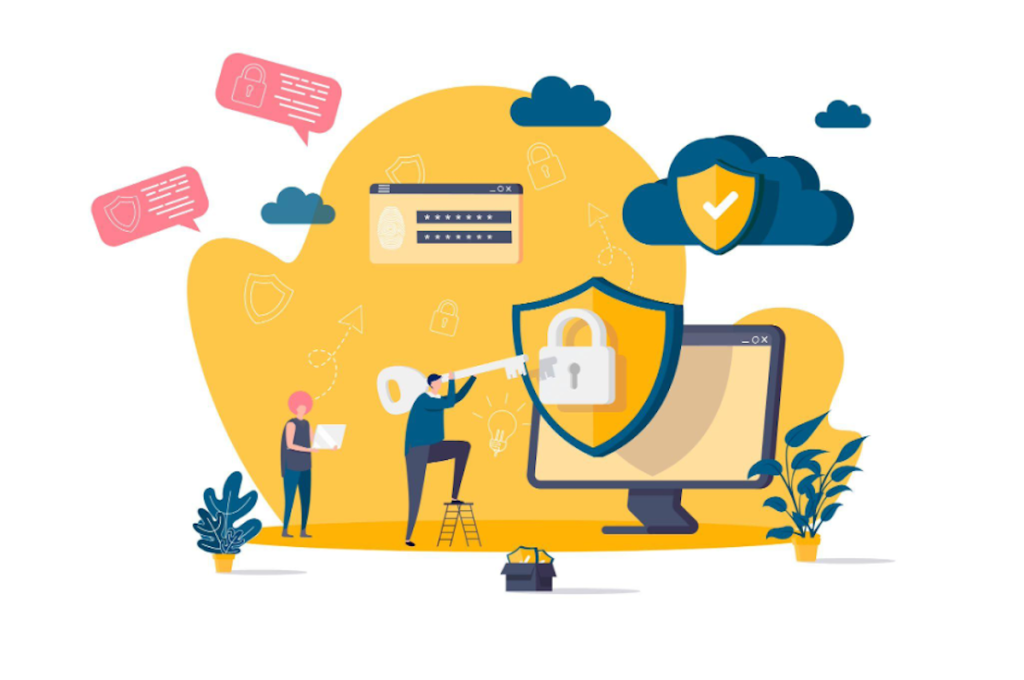One-Time-Password or OTP is a verification technology whose applications continue to be implemented across multiple platforms. This system typically uses a one-time code, a string of unique characters sent to a user, usually by SMS, to allow the user to create or change a password to a given service. The creation and use of OTP is designed to address and mitigate the rising cases of cyber threats to user platforms as a more robust security measure.
How Does OTP Work?
To understand how One-Time-Password works, think of a static password, i.e., the unique pin or password you use for logging into your personal computer, bank account, or email. These passwords are static as they do not change, and you can use them several times. An OTP, on the other hand, can only be used once, after which it is rendered invalid, and you’ll need to create a static password. This has the unique advantage of ensuring only the correct user can access the code sent through the registered email or phone number by SMS.
Single Factor Vs. Two Factor Authentication
OTP is a type of two-factor authentication technology. This means that there are two steps before a user can log in. On the other hand, single-factor authentication refers to logging in using just a user name and a password. This type of authentication is undoubtedly less safe and easily susceptible to mass-scale data breaches, as was the case of Colonial Pipeline in May of 2021. A ransomware group managed to access the system fitted with single-factor authentication leading to spikes in gas prices.
Types Of OTP
OTPs fall into two main categories deployed by organizations as robust yet straightforward security features. HOTPs are event-based OTPS generated and shared between servers and log-in devices such as laptops or smartphones. They are stored and will be valid until the user enters the code.
TOTP is a time-based version of OTP that is built on HOTP. It generates a unique code depending on time intervals such as 30 seconds or 60 seconds, so if the code is not used within the time indicated, it becomes invalid, and the user must request a new code.
Applications Of OTP
The convenience of OTP makes it possible to carry out a diverse range of functions for both business owners and customers. Data security is a crucial element in this era, one which OTP guarantees to a significant extent. OTP technology is applied in several ways, including:
Safeguarding Sensitive and Confidential Documents
A lot of private data is stored on servers and cloud storage solutions as these ensure security and easy access. These include health records, legal documents, and ownership rights to physical and digital assets. OTP is used to ensure that only authorized people can request access to such documents.
Self-Service
Before one-time passwords were invented and deployed commercially, processes such as change of user details were lengthy processes. OTPs make it easier to request and amend specific details like mailing addresses associated with services like banking. The user receives the unique OTP to ensure that only authorized users can access their services.
Connecting Multiple Devices to One Platform
You can access your email or bank account from any number of devices, a functionality secured by OTP. Users can access their data from any location and on any device as their identity is verifiable by OTPs that can only be generated for each unique user.
Securing Transactions and Payments
In the modern digital era, payments and transactions are facilitated by traditional banks and payments services such as Paypal and Venmo. Mobile transactions alone account for over 70% of total e-commerce transactions today. OTPs ensure secure payment channels between merchants and buyers, often across borders.
Droids and Spammers
The online world is sophisticated enough that many systems may not tell the difference between a human and a bot attempting to gain access. In single-factor authentication, bots can generate millions of random passwords, leading to unauthorized access. OTPs guarantee that only the owner (human) receives and uses the OTP.
Password Reset
An increasing number of services require frequent password changes. This security feature is intended to provide additional safety, but it commonly results in forgotten passwords. A one-time password can not only be used to reset the password but also as a temporary password in some circumstances, such as when a user is attempting to log in from a different location.
Account Reactivation
We tend to use some services less frequently than others. If an account is not frequently used, the system supporting the account typically flags the account as dormant and deactivates it after a specified period. OTPs can be used in place of traditional account recovery methods. This is another form of self-service powered by OTP.
User Registration and Access to Public Services
In many countries today, public services can be accessed on dedicated digital platforms. The adoption of OTP has helped prevent fraud in which individuals’ information is registered without their knowledge. The process of registration and access is now safer because of OTP.
Wrapping It Up -Data Security in the 21st Century
Data breaches and leaks are commonplace, creating financial losses and credibility issues for many companies. Some companies are more susceptible to such attacks, including financial services and cloud companies. In a way, the rise of such threats has inadvertently led to the development of OTP as a popular two-factor authentication software. Others include Google Authenticator and Microsoft Authenticator. All in all, these programs safeguard our online activities at a time when only a thin veil separates our physical and digital worlds.




